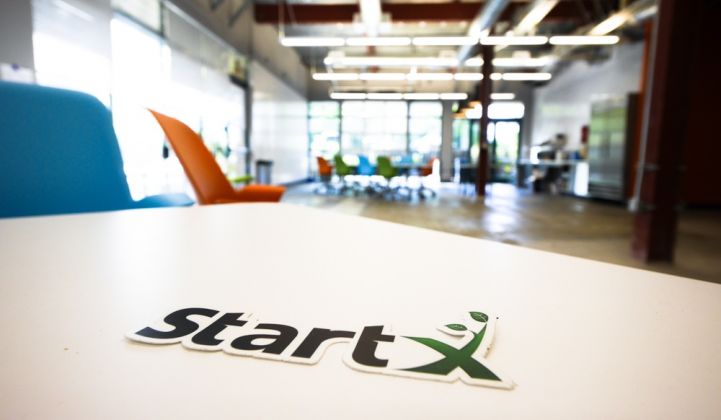The extreme weather events of the 2017 hurricane season have brought home yet another reminder of the devastating effects of our changing climate.
Climate change is a challenge that ultimately requires a global solution. As veterans of the Obama administration, we witnessed firsthand what can be achieved on a global scale as a result of American leadership. While the Trump administration has disparaged the Paris Agreement and relinquished leadership on clean energy and climate change matters, there is still much that can be accomplished by public- and private-sector efforts across the United States to address the climate challenge. In particular, such efforts must include increased support for developing new clean energy technology innovations.
Clean energy technologies are already presenting visible economic opportunities. Solar and wind energy jobs grew in 2016 by more than 25 percent nationally. According to the U.S. Department of Energy, jobs in solar and wind now employ nearly half a million people -- more jobs than Apple, Google and Facebook combined -- and nearly nine times more jobs than coal mining.
Beyond jobs, investors are also validating the promise of this sector. Tesla, once a relatively small startup, earlier this year spent several months as the most valuable U.S. automaker. Moreover, Bloomberg New Energy Finance projects $8.7 trillion worldwide in zero-carbon power generation investment through 2040. As the Paris Agreement notes, existing technologies alone will not be enough to fully meet the threat of climate change, but the emerging clean energy industry is growing.
The challenge now is to build on these economic trends and support further pragmatic solutions to deeply reduce carbon emissions. America’s ecosystem of energy startups, innovative businesses, and transformative government research and development (R&D) programs can and should be leveraged to support entrepreneurial efforts that can lead to needed additional breakthroughs. We recommend the following series of actions to enable such efforts.
Provide new government financing programs
Clean energy startups rely on a mixture of equity, debt and grant capital as they grow. Unfortunately, venture capital funding for clean energy technologies has not recovered to its pre-recession levels, and has fallen 30 percent since 2011. Such a decrease in equity funding impacts the formation of clean energy startups, limiting the potential for new breakthrough technologies to emerge.
Government funding programs can provide an important backstop against this funding shortfall and should be expanded. The Mission Innovation program announced in Paris in 2015 brought together 22 countries, including the United States, with a commitment to double government R&D budgets. A centerpiece of the U.S. proposal was expanding the Advanced Research Projects Agency-Energy.
ARPA-E has, since 2009, provided grant funding awards averaging $2.5 million to more than 580 project teams. ARPA-E startups have collectively received over $1.8 billion in private sector follow-on funding. Over the course of this year, unfortunately, the Trump administration proposed canceling ARPA-E funding and has further proposed reducing funding for the Department of Energy’s Office of Energy Efficiency and Renewable Energy, as well as the associated clean energy funding to the department’s national laboratories.
In the wake of these developments, Congress must not approve these cuts in its forthcoming budget. In addition, there is now an urgent need to step up at the state and local levels to catalyze private-sector capital. Similar smaller-scale programs can also be established at the state and local levels. Programs such as the Massachusetts Clean Energy Center and Illinois’ Clean Energy Trust are strong examples of programs that bring a range of funding mechanisms and can be replicated in other regions.
Creating and expanding support for startup incubators and accelerators
Clean energy incubator and accelerator programs help address the unique challenges of developing new technologies. Incubators provide a place-based community of mentors and investors, whereas accelerators focus on providing a time-bounded program for developing and expanding a new business. Support can come from a variety of sources, such as local governments, corporate sponsors and proceeds from exits by portfolio companies.
Both models have been successful in supporting innovative technologies. For example, the highly noted Silicon Valley startup accelerator Y Combinator has supported successful startups across sectors, from tech startups Airbnb and Dropbox, to the mobility startup Cruise Automation.
Efforts by city and state governments can play a role through providing financial support and physical space for incubators and accelerators. The state of California in 2016 made $20 million in awards to support four such entities through its Regional Energy Innovation Cluster program. The awardees -- Cyclotron Road, Los Angeles Cleantech Incubator, Cleantech San Diego and BlueTechValley -- stand as examples of this promising approach.
Developing new entrepreneurial talent at colleges and universities
Additional steps are also needed to cultivate the entrepreneurial talent pool at our institutions of higher education. Students and academic researchers are a key source of talent and expertise for new clean energy technology companies, and many have gone on to found new companies in the sector.
New efforts to support talent development at colleges and universities can take the form of mentorship, laboratory space and cultivating startup communities, such as SkyDeck at the University of California, Berkeley and StartX at Stanford University.
Transforming our economy to combat climate change should not be a choice, but rather a requirement. The tools and resources necessary to drive that economic transformation through new clean energy technology innovations exist across the United States -- in government, the private sector and academia. The time to act is now.
***
Kenneth Alston served in the Obama administration from 2012-2016, most recently as Special Advisor to the U.S. Secretary of Energy. He is now Investment Manager at the California Clean Energy Fund.
Yuvaraj Sivalingam served in the Obama administration from 2013-2017 at the U.S. Departments of the Treasury, Commerce and Defense.




